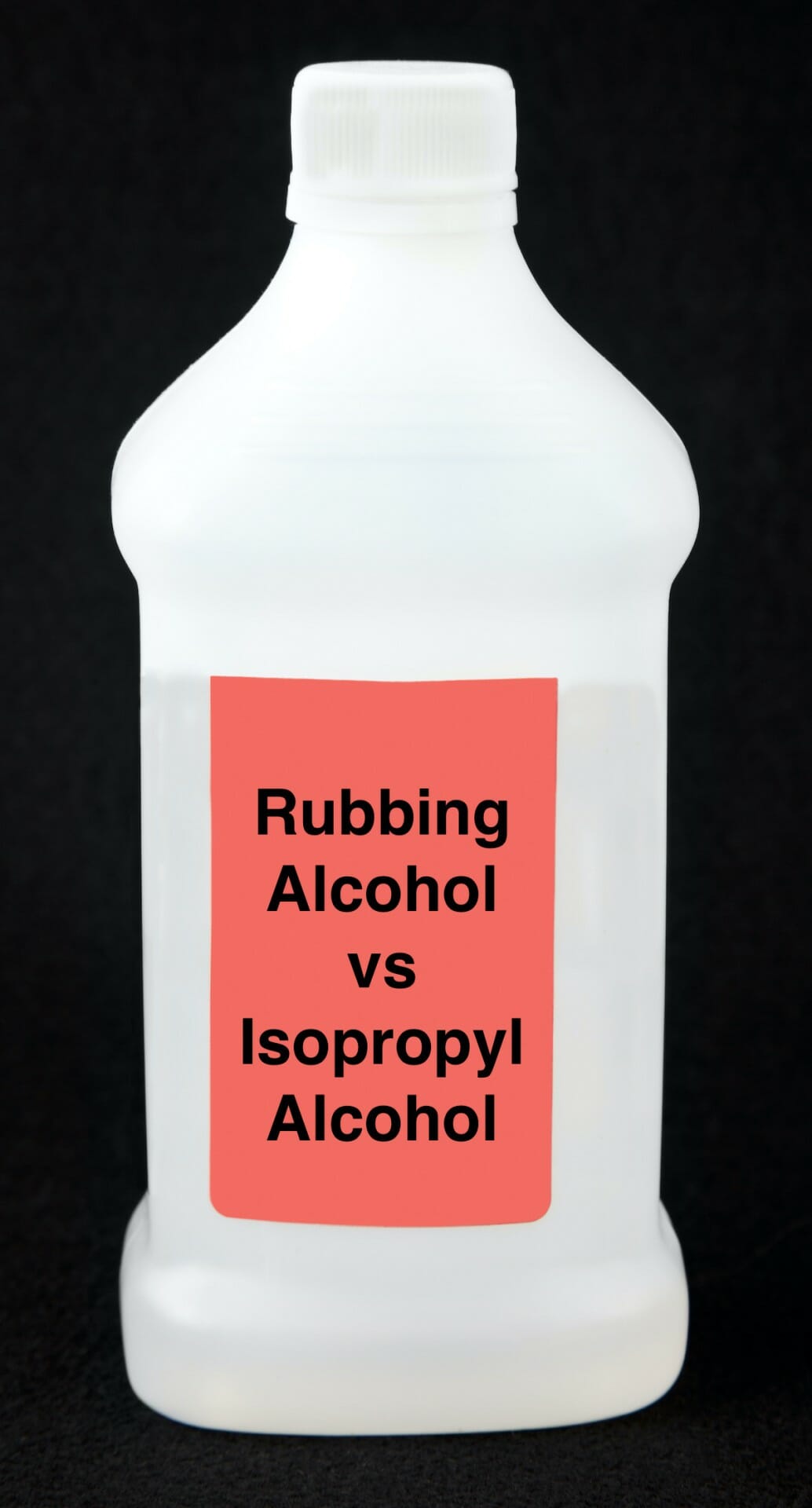Rubbing alcohol is a mixture of isopropyl alcohol and water. Sometimes, it contains additional ingredients. By contrast, isopropyl alcohol is pure alcohol with no other ingredients.
Because rubbing alcohol contains isopropyl alcohol, the two liquids have similar properties, but they are not the same. For example, both have antibacterial properties and are disinfectants.
However, because it is undiluted, isopropyl alcohol is too hazardous to use as a disinfectant for the skin or home. Companies use isopropyl alcohol in industrial settings to manufacture products, while rubbing alcohol is for at-home use.
Here is a discussion about the similarities and differences between isopropyl alcohol and rubbing alcohol. It will explain how to use rubbing alcohol as a disinfectant and the potential side effects.
Are isopropyl alcohol and rubbing alcohol the same thing?
No – isopropyl alcohol and rubbing alcohol are not the same thing.
Isopropyl alcohol is pure alcohol and is a colorless liquid with a musty, sharp odor. There are no other ingredients in a bottle of isopropyl alcohol.
Isopropyl alcohol is also not the same substance as ethyl alcohol, which is the type of alcohol in beer, wine, and other alcoholic beverages.
By contrast, rubbing alcohol contains isopropyl alcohol among other ingredients, such as water. Most rubbing alcohol brands contain 70% isopropyl alcohol.
What else can rubbing alcohol contain?
The other main component of rubbing alcohol is water. Depending on the product, there may be other ingredients.
Some rubbing alcohols that companies manufacture for aching muscles contain essential oils such as wintergreen. Wintergreen essential oil contains a compound known as methyl salicylate, which dilates tiny blood vessels in the skin. This can help relieve aches and pains.
Similarities and differences
The main difference between isopropyl alcohol and rubbing alcohol is the concentration. The concentration of isopropyl alcohol is 100%, while the concentration of rubbing alcohol is less because of the addition of water.
Otherwise, the two liquids have similar properties. They are antibacterial and antiseptic. They are also both flammable, and toxic when inhaled or ingested.
Both products involve risks with use, but because isopropyl alcohol is more concentrated than rubbing alcohol, it is more hazardous.
Uses
Despite their similarities, isopropyl alcohol and rubbing alcohol have different uses.
Isopropyl alcohol
Manufacturers use isopropyl alcohol to make:
cosmetics
personal care products
perfumes
antifreeze
pharmaceuticals
dyes
lacquers
window cleaners
Rubbing alcohol
People typically use rubbing alcohol at home as an antiseptic to clean cuts and scrapes, lowering the risk of infection. It may be part of an at-home first aid kit or medicine cabinet.
If a rubbing alcohol contains wintergreen or methyl salicylate, individuals may use it to help relieve muscle aches that are the result of exertion. An additional use involves disinfecting small objects in the home.
Is one better than the other?
Isopropyl alcohol is undiluted, so has stronger antibacterial properties. However, this also makes it more hazardous, and it is not appropriate for home use.
People should not apply isopropyl alcohol to the skin for any reason, as it can pass into the bloodstream and cause poisoning. Rubbing alcohol is better for use in first aid and to sterilize small objects or surfaces.
How to use rubbing alcohol
Disinfecting items in the home
A person may use rubbing alcohol in the home to disinfect thermometers and frequently touched items, such as computer keyboards and phones.
First, ensure the room is well-ventilated. Next, dip cotton wool in rubbing alcohol and apply it to the surface or object.
Disinfecting cuts and scrapes
People can use rubbing alcohol that contains 70% isopropyl alcohol to disinfect minor cuts and scrapes. To do this, follow these steps:
- Ensure the room has good ventilation.
- Gently clean the skin around the cut with some water.
- Add a small amount of rubbing alcohol to a cotton pad and apply to the area. Allow it to dry.
- Cover with a sterile bandage, if necessary.
- Repeat this 1–3 times per day.
Do not apply rubbing alcohol to a large area of the body or near the eyes, and do not use it for more than 1 week without consulting a doctor.
Relieving muscle aches due to exertion
For muscle aches, a person may try using rubbing alcohol that contains 50% isopropyl alcohol with added wintergreen. Apply some of the rubbing alcohol to clean gauze or a cotton swab, then rub onto the area. Alternatively, apply some of the liquid directly to the skin and rub with the hands.
Again, it is important to make sure the room has good ventilation. Do not get rubbing alcohol into the eyes or on other mucous membranes.
Risks and side effects
Using rubbing alcohol on the skin or in the home has some risks, such as:
Skin irritation
Fire
Eye damage
Poisoning
Both isopropyl alcohol and rubbing alcohol are toxic. This is true whether a person inhales the fumes or if they drink the liquid. Neither substance is a substitute for alcohol in drinks, and even one sip can have the devastating effects.
Wintergreen and methyl salicylate are also toxic when ingested. Always keep medicines and alcohol out of the reach of children in a locked cabinet.
Rubbing alcohol is a diluted form of isopropyl alcohol. Sometimes, it also contains other ingredients, such as wintergreen essential oil. While the concentration of isopropyl alcohol is 100%, the concentration of many brands of rubbing alcohol is 70%.
The difference in strength makes rubbing alcohol safe to use in the home to disinfect objects and scrapes on the skin. However, it is only safe if a person follows directions for use and heeds precautions, such as using it in a well-ventilated area and avoiding contact with the eyes.
Source: https://www. medicalnewstoday.com/articles/ isopropyl-alcohol-vs-rubbing-alcohol?
Last medically reviewed on January 19, 2022
Exclusive content from CARE magazine












